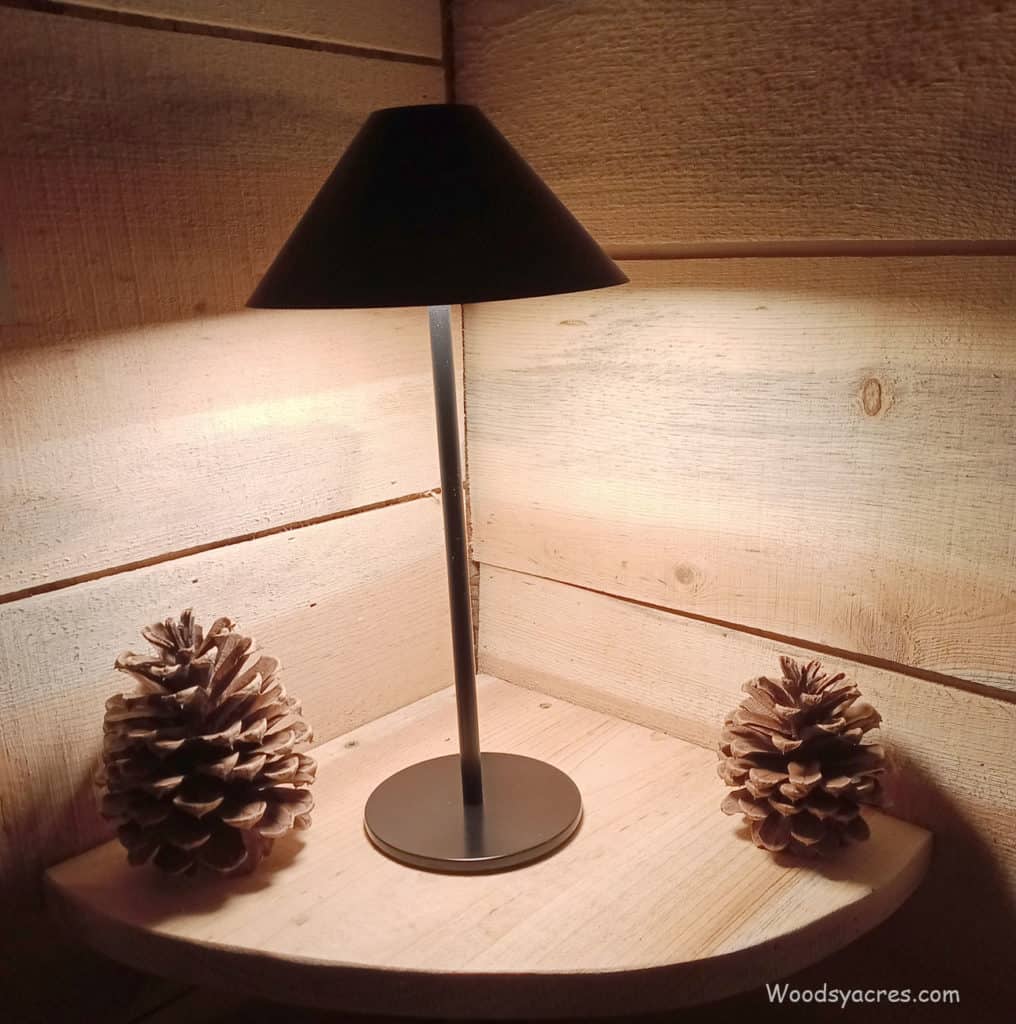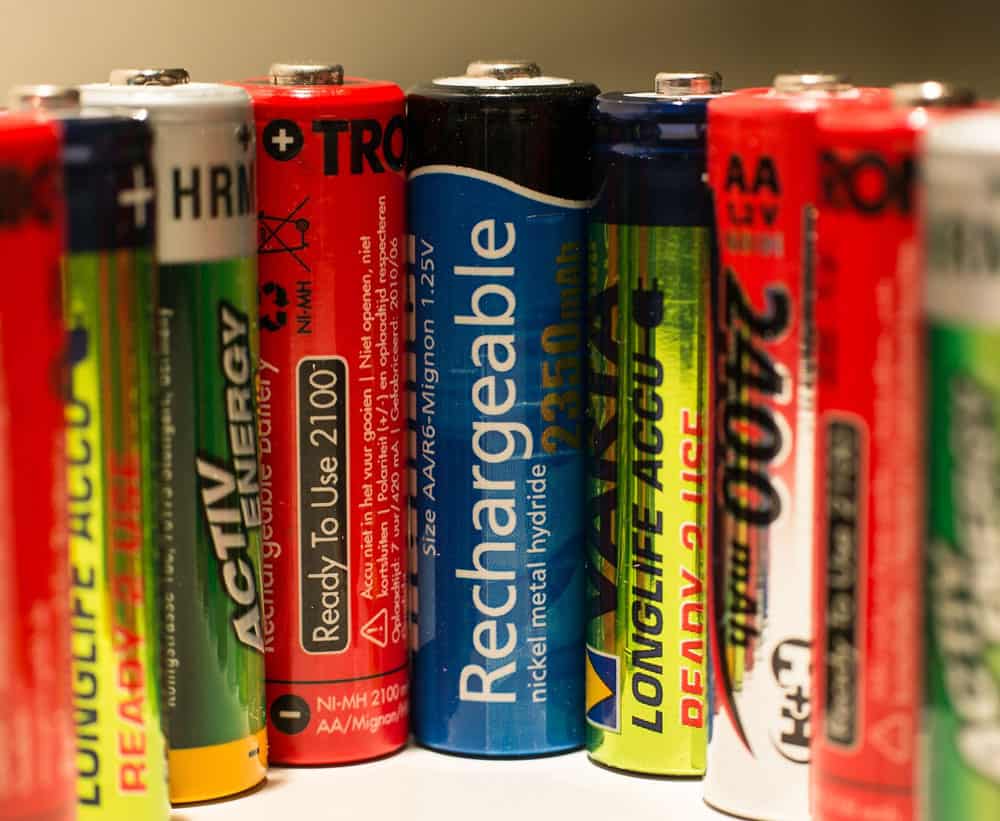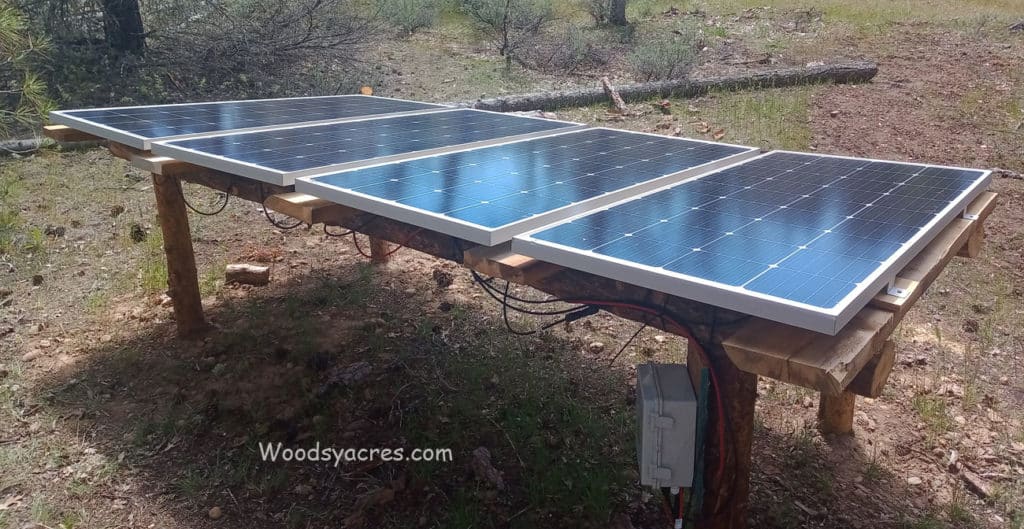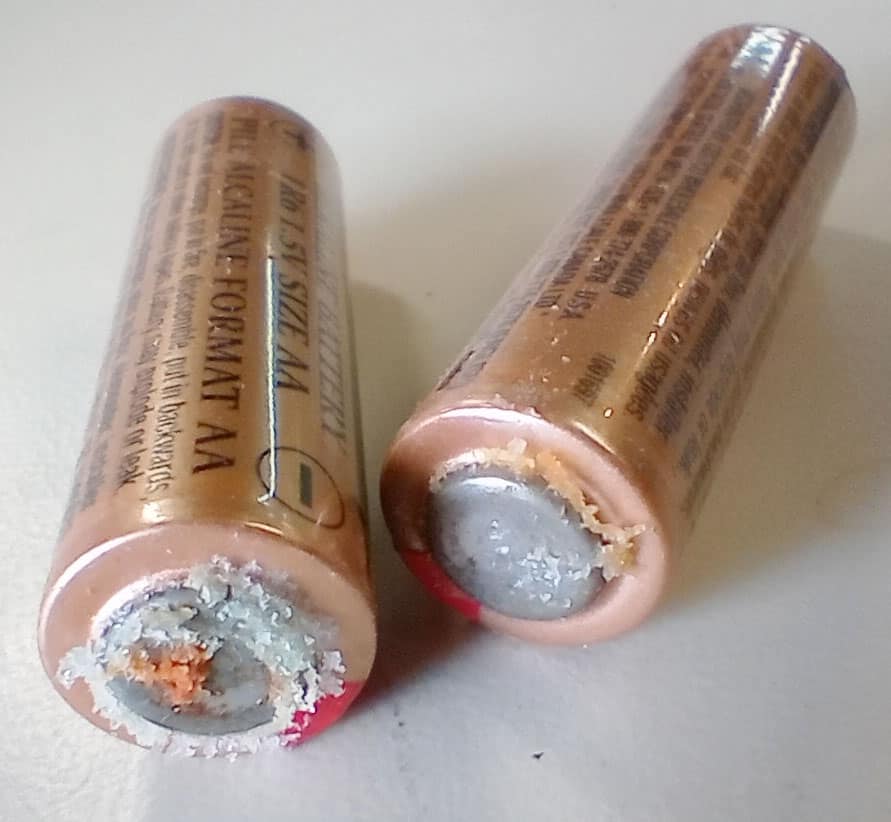
Is it possible to light up a tiny home, RV, tent, cabin, cottage, primary residence, or any shelter of your choice during an emergency when no electricity is available? Can you do it without using potentially dangerous fuels such as kerosene, white gas, or propane?
With modern batteries, LED light technology, and advancements in solar, there are many ways to generate light without using messy, smelly, or potentially dangerous liquids and gas.
We do not use any lighting source requiring a flame that can generate unnecessary heat, nasty smells, and potentially dangerous fumes such as carbon monoxide. Instead, we use solar and battery power for most of our lighting needs.
Our eight-year-old son (at the time) often uses a chemical source for his fun lighting adventures.
During the day, when the power comes from our solar system, we charge up all rechargeable batteries that need charging. So more and more, there’s no need to operate fire fuel lanterns to see your way around inside or outside your shelter of choice. During power outages, whether a tiny house, small cottage, RV, travel trailer, cabin, or your primary residence.
If you want to see what modern lighting devices we use, I’ve written an article listing 17 lighting options that do not use any fire to provide a significant amount of lighting.
Lighting your way during the dark with today’s technology using no fire can be accomplished through four categories:
- LED lighting
- Batteries
- Solar power.
- Chemicals
LED Lighting Needs Less Power for a Brighter Light
LED (Light-Emitting Diode) lights revolutionized the lighting industry, and the way we light up our world requires less energy. Yet these types of lights can produce a brighter source than the old incandescent lights.
The LED products available for lighting up any area, whether inside or outside, seemingly grow never-ending. Every time I go into a hardware or lumber store, they’re offering something new for lighting things up.
How Batteries Have Become a key Power Component of Lighting
Although the late 1800s brought the invention of batteries, it seems just in the past couple of decades have they started becoming a staple in offering alternative lighting sources. (But maybe every generation thought the same about their current and past lighting options.)
With LED lights, batteries have become critical in keeping things lit up longer. Even the standard alkaline batteries can now provide lighting for a more extended time due to fewer power requirements from the LED light.
1898 – Production of the first Ever Ready flashlight. There was a biblical quote “Let There Be Light” on the cover of the 1899 Eveready catalog, which advertised a new flashlight.
Armytek.com Website
Then around 1967 came the first rechargeable batteries for flashlights that helped save money on buying batteries constantly. With time, these same rechargeable batteries also aided in the solar charging industry that offers lighting without grid power.

There are all types of batteries on the market today. Anything from the standard size batteries that most consumers know, AAA, AA, C, D, etc., to 18-volt and 40-volt batteries for cordless tools. Then there are larger capacity batteries for backup solar systems and now vehicles.
Different variants of batteries can include the following.
- General duty – carbon zinc batteries that are often labeled as general, heavy, or super duty
- Alkaline – consisting of potassium hydroxide
- NiCAD – these are nickel-cadmium, also referred to as Ni-Cd or NiCd
- NiMH – a nickel-metal hydride battery also called Ni-MH
- Lithium – There are many lithium batteries; however, Li-ion is the most commonly used battery in solar-type lighting devices.
Solar Power in the Right Situation can Become a Game Changer.

Solar is increasingly becoming a standard part of our power source, whether for smaller solar light products or large solar arrays providing lights for a home, small farm, or an entire commercial building.
There is built-in solar power available in all types of lighting products that can provide what seems lasting power for lights and many other components.
If you take the LED lights along with Li-ion batteries and a small solar panel, as many manufacturers have done, you can have lighting anywhere the sun is shining.
The newest device in the solar arena, the solar generator, works great as a temporary source of electricity for any place you visit. As long as there is exposure to the sun, you’ll have energy for recharging rechargeable batteries and many other tasks.
Chemical Lights Are For Temporary Situations and Fun
Chemical lighting does not emit much light but can be a welcomed sight in an emergency when it’s the only source of lighting available.
There are a couple of well-known and popular sources of chemically created lighting. The light stick, when broken, make a decent amount of light when the chemicals within get mixed.
This form of lighting comes in handy when there’s a need for lighting enough to see things around you. Although possible, it’s not a light you most likely want to do any reading.
Another potential lighting source from a chemical reaction is the glowing paint or other item containing Phosphorescent. However, getting light from this source requires exposure to some light for an extended period, such as sunshine or artificial light from a flashlight or lantern.
Unfortunately, not all artificial lights have enough UV to activate the chemicals in the paint, such as some LED lights. Once the paint is exposed, it can continue to glow for as long as two to five hours.
Depending on the quality, thickness, and exposure, some phosphor paints can last up to 12 hours. However, once again, a light to possibly see your way around but not for illuminating things in detail.
Drawbacks to Lighting With Modern Technology Sources
Using batteries and solar in combination to gain a steady lighting source does have some drawbacks.
Check out this article that presents fundamental ideas for lighting your space: 17 Ideas Lighting Off-grid Cabins or Homes Without Using Fire.
LED Lights and Batteries Wear Out Over Time

- LED lights are a remarkable invention; however, just as with the older incandescent lightbulb, LED lights also do burn out. Either from the hours used, something faulty, or just poor quality, the adage, “you get what you pay for,” can be pretty accurate.
- Standard batteries can go bad, leak, and can potentially damage any device housing them. This leakage can go for either cheaper zinc-carbon or more expensive alkaline batteries. In addition, the chemicals contained within both types of these batteries are corrosive, which can damage the device. If they leak, use special precautions to avoid getting the chemicals on your hands or in your eyes. If you get this chemical on your hands, immediately wash it off with water and soap.
- Rechargeable batteries become weaker with use. All batteries have a limited lifetime and eventually will require replacement over time. Make sure you have extra batteries or have a resource where you can purchase them easily.
- Although it’ll take considerable time and batteries wear out, solar panels will eventually need replacing.
The Power Source For Renewable Energy Is Not Always Reliable
- Rechargeable batteries require a steady power source to renew. Without a consistent power source, the batteries will die, and the lighting will stop.
- Solar is great, but if there are several days of clouds, the panels will not be able to produce enough power for lights or backup batteries. If there’s no power in the battery or batteries of the solar system, then there will be no way to recharge the rechargeable batteries.
If you are using wind for a power source, there are many days when the wind is not blowing enough to generate power for charging things up.
Chemical lighting, which is more for emergencies, only illuminates for a short time before replenishing with a new chemical source or additional light such as the sun.
Have Other Sources of Lighting in Case of Technology Failure

Modern lighting sources using today’s technology are exciting and reliable if planned out and used appropriately.
However, it’s advisable to have a secondary backup plan when something freaky happens where you use all your batteries and the dark clouds of nature linger for several days and even weeks over your shelter. Then, when the winds don’t blow, and the sun is unseen for days, you’ll need other forms of lighting.
Not to mention the cool nostalgia factor these types of devices can bring to a home.
Other lighting sources include candles, paraffin or kerosene lanterns, white gas, propane lighting apparatuses, and other household oil ingredients.
